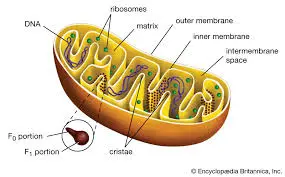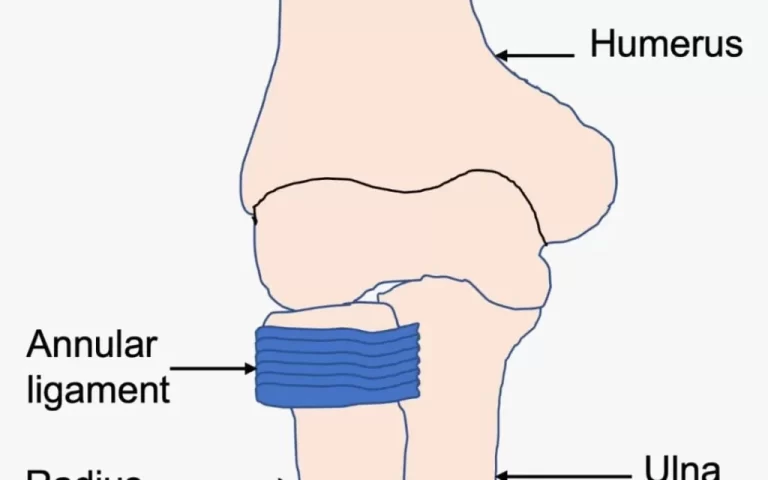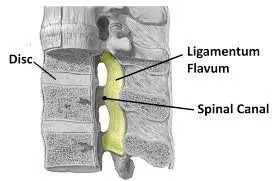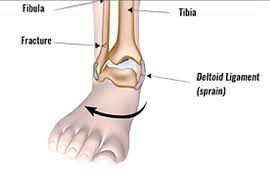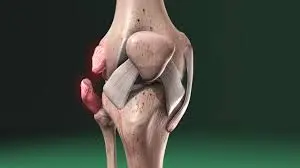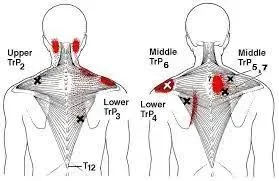What Are Mitochondria?
What are Mitochondria?
The majority of eukaryotic creatures have mitochondria, which are organelles that are frequently referred to as the “powerhouses of the cell.” Their main work is to use a process known as cellular respiration to create adenosine triphosphate (ATP), which is the source of energy. This article will examine mitochondria’s functions, appearance, and the consequences of improper mitochondrial function.
The entire cell uses adenosine triphosphate (ATP), which is produced by aerobic respiration in the double-membraned mitochondria, as a chemical energy source. In 1898, Carl Benda coined the name “mitochondrion” to describe a granule that resembled threads.
Mature mammalian red blood cells are one example of a multicellular organism whose cells lack mitochondria. Despite losing its whole mitochondrial DNA, the multicellular species Henneguya salminicola is known to have kept organelles related to mitochondria.
Although their cross sections typically range from 0.75 to 3 µm2, mitochondria can differ greatly in size and organization. They are invisible unless dyed specifically. These cellular processes are then temporally synchronized with mitochondrial biogenesis.
Human disease and conditions, including mitochondrial diseases, cardiac malfunction, heart failure, and autism, are all linked to mitochondria. A cell’s mitochondrial count varies greatly depending on the organism, tissue, and cell type.
The structure of mitochondria:
Since mitochondria are small, typically ranging from 0.75 to 3 micrometers, they cannot be seen under a microscope unless they are labeled.
Among the principal areas are the following:
Outer membrane:
Like the outer membrane of gram-negative bacteria, it is shaped like a beta barrel that crosses the membrane. If a signaling sequence at the N-terminus of a larger protein attaches to a big multisubunit protein termed translocase in the outer membrane. Specialized translocation complexes are used to import mitochondrial pre-proteins.
Enzymes involved in a variety of processes, including the oxidation of adrenaline, the breakdown of tryptophan, and the elongation of fatty acids, are also found in the outer membrane. Cell death results from the disruption of the outer membrane, which allows proteins in the intermembrane gap to seep into the cytoplasm.
Intermembrane space:
Another name for it is perimitochondrial space. However, the protein composition of this area differs from that of the cytosol because big proteins require a particular signaling sequence in order to be transported across the outer membrane.
Inner membrane:
This membrane contains multifunctional proteins. This phospholipid, which was first identified in 1942 in cow hearts, is typically found in bacterial and mitochondrial plasma membranes. When this impermeability is disrupted, it can result in a variety of clinical conditions, including cancer and neurological diseases.
Cristae:
The inner membrane’s folds are called cristae. They expand the membrane’s surface area, which expands the region that can be used for chemical processes.
The inner mitochondrial membrane is divided into several folds known as cristae, which increase the membrane’s surface area and boost its capacity to generate ATP. The inner membrane’s area is around five times that of the outer membrane in normal liver mitochondria. Small, spherical entities called oxysomes or F1 particles are scattered throughout these folds.
Matrix:
It is crucial to the synthesis of ATP and contains hundreds of enzymes. This is where mitochondrial DNA is stored. Despite being frequently depicted as oval-shaped organelles, mitochondria are continuously fusing (bonding) and fissioning (dividing).
Mitochondrial DNA:
- This is why mtDNA has been so helpful in tracking down genetic lines.
- According to mtDNA investigations, for example, humans may have descended from a common ancestor known as mitochondrial Eve and started in Africa not too long ago, roughly 200,000 years ago.
Function of mitochondria:
The two main functions of mitochondria are to control cellular metabolism and to produce ATP (phosphorylated ADP), the cell’s energy currency, through respiration. But aside from producing ATP, the mitochondrion performs a wide range of other tasks.
Energy conversion:
This is accomplished by oxidizing the two main byproducts of glucose that are generated in the cytosol: pyruvate and NADH. The presence of oxygen is necessary for this kind of cellular respiration, also referred to as aerobic respiration. A small quantity of ATP can also be produced by plant mitochondria utilizing the alternative substrate nitrite, either without oxygen or by breaking down the sugar created during photosynthesis.
Mitochondrial fatty acid synthesis:
It is also believed to be a modulator of intracellular signaling because of its effect on bioactive lipid levels, including sphingolipids and lysophospholipids. The most significant byproduct of mtFASII, which also serves as the initial substrate for the production of lipoic acid, is octanoyl-ACP (C8).
Storage and release of calcium ions:
The levels of free calcium in the cell are crucial for signal transduction and can control a variety of processes. One mechanism that contributes to the cell’s calcium homeostasis is the temporary storage of calcium in mitochondria. They are good “cytosolic buffers” for calcium because of their capacity to absorb it quickly for subsequent release. These can trigger the release of neurotransmitters in nerve cells and hormones in endocrine cells, among other functions, by activating several second messenger system proteins.
Cellular proliferation regulation:
Research has been done on the connection between mitochondria and cellular growth. For tumor cells to proliferate quickly, they need a lot of ATP to manufacture bioactive substances, including proteins, lipids, and nucleotides. Cell cycle arrest caused by interference with OxPhos suggests that mitochondria are involved in cell growth.
In addition to basic cellular tasks like regulating cell volume, solute concentration, and cellular architecture, mitochondrial ATP generation is essential for cell division and differentiation in infection. ATP levels vary during the cell cycle, indicating a connection between ATP abundance and the cell’s capacity to transition into a new cell cycle. Because ATP is essential to the cell’s basic processes, variations in the amount of ATP produced by the mitochondria can affect the cell cycle.
Programmed cell death and innate immunity:
Organ development and cellular homeostasis are two physiological processes that depend on programmed cell death (PCD). By supporting antiviral defense, pathogen clearance, inflammation, and immune cell recruitment, it plays a crucial role in immunity and acts as an inherent mechanism to avoid malignant transformation.
It has long been known that mitochondria play a crucial part in the intrinsic process of apoptosis, which is a type of PCD. Mitochondria are unique among cellular components because of their endosymbiotic origin, and their exposure to the cytosol can activate the same pathways as infection signs. These processes result in the stimulation of proinflammatory genes, autophagy, or apoptosis.
For instance, mitochondrial mtDNA can be identified by Toll-like receptor 9 and cGAS and mimics bacterial DNA because it lacks CpG methylation. Bidirectional mitochondrial transcription produces double-stranded RNA (dsRNA), which can activate viral sensing pathways via RIG-I-like receptors. Furthermore, formyl peptide receptors are able to detect the N-formylation of mitochondrial proteins, which is comparable to that of bacterial proteins.
Donation:
Other cells can receive mitochondria from certain cells. These donations take place in a variety of cell types in species like rats, mollusks, and yeast. It had not been seen in vivo in people as of 2025. Donations can be made to support damaged cells, stimulate the immune system or tissue repair, or provide energy to troubled cells.
The lung cells took up the mitochondria that the stem cells expelled. After that, the lung cells were able to proliferate and process glucose again. How a cell signals that it needs mitochondrial support and how other cells interpret those signals have not been determined by research.
What do mitochondria do?
Only around 3% of the genes required to create a mitochondrion are used by its energy-producing machinery.
Producing energy:
- Because it drives metabolic processes, ATP, a complex organic molecule present in all forms of life, is frequently referred to as the molecular unit of currency.
- The energy can be put to use after these chemical bonds are broken.
Cell death:
- Cells are removed and destroyed when they age or break. Which cells are killed is determined in part by mitochondria.
- Because normal apoptosis is disrupted in some disorders, like cancer, mitochondria are believed to be involved in the disease.
Storing calcium:
- For many biological functions, calcium is essential. Among other things, calcium is required for blood coagulation, muscular contraction, and fertilization.
- This is made possible by mitochondria, which swiftly collect and store calcium ions until they are required.
Heat production:
- When you’re cold, you tremble to stay warm.
- Non-shivering thermogenesis is the term for this process. Babies, when we are more vulnerable to cold, have the highest levels of brown fat, which gradually decrease as we get older.
Mitochondrial disease:
Furthermore, mitochondria do not have the same defenses as the cell’s nucleus does. However, nuclear DNA abnormalities that impact products that end up in the mitochondria are the cause of most mitochondrial disorders. These mutations may occur naturally or as a result of inheritance.
The cell in which mitochondria are located is left without energy when they stop working. Generally speaking, defective mitochondria primarily damage cells that require the most energy, such as neurons and heart muscle cells.
There are hundreds of distinct mitochondrial conditions since mitochondria carry out a wide range of tasks in various organs. Identical mtDNA mutations may not result in the same diseases because of the complex interactions between the hundreds of genes and cells that must work together to maintain the proper operation of our metabolic system.
On the other hand, phenocopies are conditions that share symptoms but are caused by mutations in distinct genes. Leigh syndrome is an example of a phenocopy and can result from a variety of mutations.
Even though mitochondrial disease symptoms can vary widely, they may include:
- Weakness and lack of muscular coordination issues, visual or auditory impairments, learning deficiencies
- Kidney, liver, or heart disease
- Digestive issues
- Neurological issues, such as dementia.
The following other conditions are believed to entail some degree of mitochondrial dysfunction:
- Parkinson’s disease
- Alzheimer’s disease
- bipolar disorder
- schizophrenia
- Chronic Fatigue Syndrome
- Huntington’s disease
- Diabetes
- Autism
Mitochondria and Aging:
- Researchers have looked into a connection between aging and mitochondrial malfunction in recent years. There are several hypotheses for aging, but in the last ten or so years, the mitochondrial free radical theory of aging has gained popularity.
- According to the idea, energy generation in mitochondria results in the creation of reactive oxygen species (ROS). Proteins, lipids, and DNA are all harmed by these highly charged particles.
- The functioning components of mitochondria are harmed as a result of ROS damage. More ROS are created when the mitochondria are unable to function as effectively, which worses the damage.
- Despite the fact that mitochondrial activity and aging have been linked, different researchers have come to different results. It is yet unclear exactly what part they play in aging.
FAQs
Are mitochondria present in plant cells?
Yes, mitochondria are found in plant cells. The organelles called mitochondria are in charge of producing energy by converting fuel molecules into ATP during cellular respiration.
Why the mother’s mitochondria?
It has long been known by scientists that human mitochondrial DNA, or mtDNA, originates solely from egg cells.
In sperm, where are the mitochondria?
Sperm mitochondria are found in the central section of the sperm tail, more precisely encircling the axoneme. Because the center portion supplies the energy (ATP) required for the sperm to travel and fertilize the egg, this position is crucial.
Does the brain include mitochondria?
According to a recent study (link is external and opens in a new window), mitochondria may be considerably odder than previously believed.
Is it possible to survive without mitochondria?
The organelles called mitochondria, which fuel the majority of human cells, are essential to life. Researchers believed that none of the other eukaryotes, which include ourselves as well as other animals, plants, fungi, and other microscopic species, could.
How can mitochondria be activated?
A mix of dietary and lifestyle decisions can help to improve mitochondrial activity and promote their function as the “powerhouse” of cells. Mitochondrial health can also be supported by a diet high in antioxidants, healthy fats, and nutrients like B vitamins.
Who gave mitochondria their name?
Carl Benda coined the term “mitochondria” in 1898. The Greek terms “mitos” (thread) and “chondros” (granule), which describe how they appear under a microscope, are where he got the term. Although Richard Altman initially called mitochondria “bioblasts” in 1890 after Albert von Kolliker first noticed them in 1857, Benda was the first to give them their present name.
What is the mitochondria’s primary purpose in points?
A function is characterized as a relationship between a collection of inputs that each have a single output. The standard notation for a function is f(x), where x represents the input.
Do mitochondria matter?
Mitochondria, the power plants found in almost all human cells as well as those of animals, plants, and fungi, are crucial for generating energy that powers cellular activity and essentially all biological activities.
Why is the term “powerhouse” applied to mitochondria?
Because they are the main locations of cellular respiration, where energy is taken from food molecules and transformed into ATP (adenosine triphosphate), the principal energy currency of the cell.
References
- Wikipedia contributors. (2025i, April 17). Mitochondrion. Wikipedia. https://en.wikipedia.org/wiki/Mitochondrion
- Newman, T. (2023, June 14). What are mitochondria? https://www.medicalnewstoday.com/articles/320875
- Contributors to Wikimedia projects. (2025, March 9). Mitochondria. Simple English Wikipedia, the Free Encyclopedia. https://simple.wikipedia.org/wiki/Mitochondria
- Rogers, & Kara. (2025, April 23). Mitochondrion | Definition, Function, Structure, & Facts. Encyclopedia Britannica. https://www.britannica.com/science/mitochondrion

